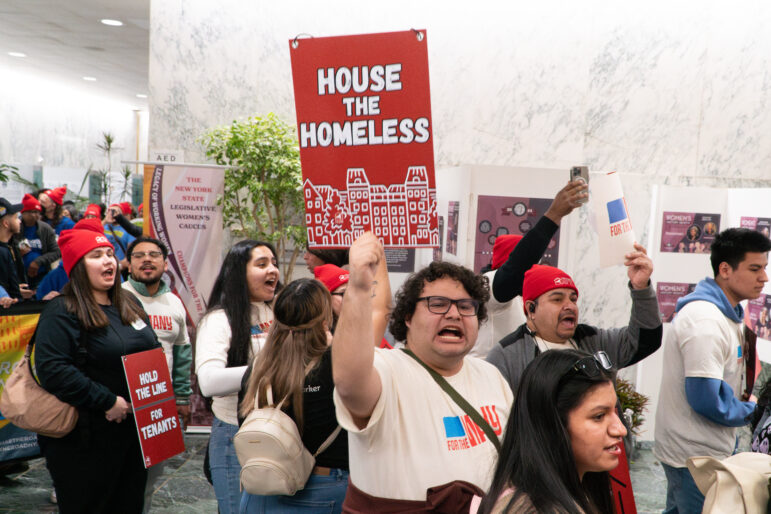
Jonathan McIntosh
Could New York State end up getting sued over how it spends the spoils from its own lawsuits? That’s a question raised by the tug-of-war over the $492 million in settlements related to the foreclosure crisis that will pump up state coffers in the coming fiscal year.
Advocates want all that money devoted to creating affordable housing and providing foreclosure relief. They point to the language of the settlements that call for the funds to be directed toward housing.
Gov. Andrew Cuomo has a different idea: He wants to combine those funds with other financial settlements the state is getting and spend the $5.4 billion total on infrastructure, upstate revitalization and a rainy-day fund.
A similar disagreement occurred in California last year. Gov. Jerry Brown had in 2012 used settlement money earmarked for foreclosure-relief programs to plug holes in his state budget. When the state ran a surplus in 2014, advocates pressed Brown to pay back the money into foreclosure programs. Brown refused, so the advocates sued. Court records indicate they’re still litigating.
New York’s Fair Share for Housing Coalition—an ad hoc assortment of housing developers like Fordham Bedford and the Housing Partnership with nonprofits like Habitat for Humanity and LiveOn NY—isn’t threatening legal action. Instead, they’re focused on the budget process, and they were cheered by the Assembly’s spending plan, which added $200 million for housing to the governor’s proposal. But that still leaves a cool $292 million on the table.
This debate is separate from the dispute last year between the governor and Attorney General Eric Schneiderman over who’d control the $613 million settlement with JP Morgan. Cuomo won control over most of it, but that settlement legally required that 85 percent of the money go toward housing, and Cuomo’s budget spends it accordingly, according to the Coalition.
The JP Morgan settlement deal said that the AG “shall use 85 percent of such funds for purposes such as to avoid preventable foreclosures, to ameliorate the effects of the foreclosure crisis, to enhance law enforcement efforts, to prevent and prosecute financial fraud or unfair or deceptive acts or practices, and to otherwise promote the interests of the investing public.”
The three settlements in question—with Ocwen Financial Corporation ($100 million), Citigroup ($92 million) and Bank of America ($300 million)—use different language from the JP Morgan deal but are clear about how the money is supposed to be spent. The Ocwen deal says it is “to be used by the State of New York for housing, foreclosure relief, and community redevelopment programs supporting New York’s housing recovery.” The Bank of America settlement reads:
“The payment to the State of New York shall be used, to the maximum extent possible, for purposes of redeveloping and revitalizing housing and home ownership and rebuilding communities in the State, and for programs intended to avoid preventable foreclosures, to ameliorate the effects of the foreclosure crisis, to provide funding for housing counselors and legal assistance, housing remediation and anti-blight projects, to enhance housing code compliance efforts aimed at addressing blight and disinvestment, and to enhance efforts to remediate the effects of financial fraud or unfair or deceptive acts or practices.”
The agreement with Citigroup uses almost identical language.
Elsewhere during the budget process, Cuomo has been pressed to spend more on several housing programs, including rental subsidies for formerly homeless people and a new round of supportive housing. So there certainly are areas where the spending could help.
In budget documents the Cuomo administration says: “The funds from these financial settlements are one-time resources; therefore, they can only be responsibly used to fund one-time expenditures.” Cuomo’s spending plan lumps the mortgage-related settlement in with a bunch of others to create $5.4 billion fund that will spend $3 billion “in loans and grants for special infrastructure projects, including those related to transportation, health care, disaster preparedness, and other one-time investments,” direct $1.5 billion to fund three $500 million competitive upstate revitalization grants and set aside $850 million as a hedge against financial uncertainties.
It’s unclear if precedent is helpful here. The big settlement windfall with which most people are familiar, the legendary Tobacco Master Settlement Agreement of the 1990s, is generally thought to have been spent largely on things other than getting people to stop smoking.
What is clear, though, is that foreclosure remains an important facet of the city’s broad housing crisis. Some 1,560 homes in the city were the subject of foreclosure auctions in 2014—a 33 percent jump over the year before, according to PropertyShark.









3 thoughts on “Dispute Over Cuomo’s Use of Bank Settlement Funds”
Remember Cuomo’s first state of the state speech where he talked about the upgrade of our roads…then did nothing about it. How about the $ go to roads, schools, bridges, housing. Or, how about the gov talked to the public…which he never does. No debates, no engaging the public himself…instead he sends his commissioners to preach his gospel or you can call it bs.
It appears as though they are using a large sum of money for the people of
upstate New York. The people of NYC are being shortchanged! Besides the
state infrastructure being fixed,and so on…what about ours? I hate to say it,
but this is why some people see Gov. Cuomo as a governor for the suburbs,
not the city,itself!
A lot like how many states used the tobacco settlement money, which was supposed to be targeted also. As far as a lot of states are concerned, these settlements are really about money for the state coffers, not housing or tobacco prevention.